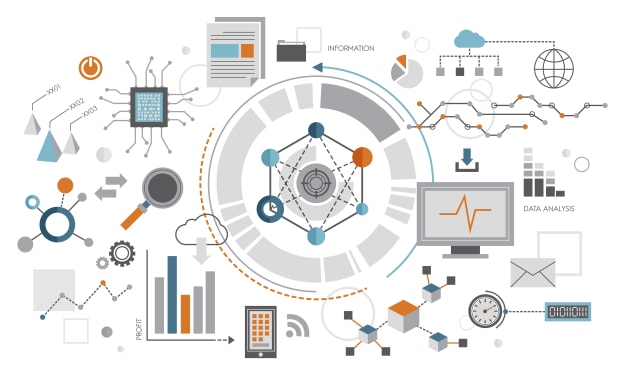If you thought today’s tech was cool—smartphone photos that rival SLRs, 75-inch 4K TVs, and smart speakers that let you play one of 40 million songs, just by asking for it—wait ‘til you get a load of what’s to come NEXT year. 2019 will likely see no shortage of great gadgets and gear worth getting excited about.
Hey everyone, welcome to Gear Up, the WatchMojo series that looks at the latest in tech trends—and sometimes we look to the future, as we are today. I’m Marc Saltzman, and in this video, we take a peek at what to expect over the coming months, including products we’ll likely see debut the Consumer Electronics Show in Vegas to kick off the new year.
Not listed in any particular order:
While a few companies will have foldable smartphones —that essentially turn the device into a big-screen tablet when unfolded—Samsung—the world’s no. 1 smartphone maker—is expected to debut its so-called Galaxy X or Galaxy Rize or Samsung Galaxy Flex device, as some suggest. Whatever you call it, this first foldable Galaxy will sport a 4.5-inch display when closed and then folds out to a tablet-style 7.3-inch OLED screen. I can see many applications for a device like this so hopefully it will be as innovative as it sounds.
No. 2. Wi-Charge

Right now, “wireless charging” means you need to place your phone down on a mat, in order for it to charge up without needing a cable. But what if you could just have it on your kitchen counter or maybe at a table at a coffee shop and it just starts charging up then and there, wirelessly? That’s the idea behind Wi-Charge, a technology you’ll likely hear more about in the coming months, as it charges up devices without them needing to be lying on a charging mat. It uses a transmitter elsewhere in the room using infrared flight to transmit power to the battery. It is said to be safe, too.
Oculus VR's next headset is officially called Oculus Quest and it’s slated for a spring 2019 release for $399. Not only is it a standalone headset—meaning you don’t need to plug it into a PC, console, or snap a smartphone into it—but it’s got an impressive display resolution of 1600x1440 per eye, it has 64GB of internal store to hold downloaded applications, plus expandable memory, and uses four ultrawide-angle sensors to assess your movements. On the content side, Oculus Quest will ship with more than 50 titles. Along with VR, expect more augmented or AR innovations over the coming year, as well.
Wait, what? Yep, in case virtual reality isn’t immersive enough for you—by folding in 360-vision with head-tracking, spatialized audio and haptic feedback vibrations tied to touch, 2019 may be the year you also SMELL your content in VR. From a company called VAQSO VR, it’s a small scent device that uses a Velcro strap to be used with any head-mounted display, and you can place up to five different scent cartridges that each last up to a month. The VAQSO VR device can be connected wirelessly through Bluetooth or by USB. OK, the idea seems ridiculous, but I’d be lying if I said I didn’t want to give this a go.
The hit vehicles at the L.A. auto show are tech marvels. The 2020 Rivian R1T and R1S concept cars are being billed as the world’s first Electric Adventure Vehicles, which will give you upwards of 400 miles—that’s from San Francisco to Yosemite and back—with its Quad-Motor System for superior control on road—and way off, wading depth of up to 3 feet, up to 11,000 pound tow rating, and seating for up to 7 people in one of these models. We’re talking 0 to 60 in 3 seconds, with zero emissions, and a ton of cool tech features… Of course, expect to see more innovations in 2019 tied to self-driving or autonomous driving technologies.
As you may or may not have heard, 5G—or fifth generation cellular wireless technology—is expected to up to 100 times the speed of 4G LTE. I’ll believe it when I see it but still, now that the infrastructure is built and carriers are continuing its testing, we’re hearing it’s ridiculously fast—to the point people might not need Wi-Fi in their homes anymore. The Sprint 5G network is still due to go live in the first half of 2019, with nine cities (including New York City, Los Angeles and Phoenix) confirmed so far, and many smartphone makers are readying their 5G-supported products.
Google’s Duplex technology is a crazy smart and realistic A.I. platform that can call and make restaurant reservations for you—yes, that guy’s voice you heard isn’t a human at all, even down to the “ums” and “ahs”—and you can expect Google Duplex rolled into devices in 2019 like Pixel smartphones, Google Home and maybe the next-gen Pixelbook. This controversial technology is meant to make our life easier as we can have A.I. handle things like reservations and appointments, but this is just scratching the surface of where it’s going.
On a related note, have you seen China’s newest broadcaster? He isn’t real, but he sure looks like it. This virtual TV anchor has joined the state-run Xinhua Chinese news agency. Powered by A.I., the new anchor learns from live broadcasting videos, is fed news stories by someone but can tweak his intonation and facial expressions, and soon be fed just facts and it could draft the report for you, truly utilizing artificial intelligence. Yes, we should all be worried about A.I. replacing our jobs, as they are able to work 24 hours a day and won’t take a sick day—unless there’s a computer virus, of course.
LG recently confirmed in a blog post it has developed a new processor for its high-end OLED televisions called the Alpha 9 Gen 2—and this chip is said to power the company’s 2019 OLED TVs we’ll catch a glimpse of at CES in January. According to LG, this processor will deliver images that "are more true-to-life than ever" and offer improved "color, sharpness, and depth." Now, this kind of language is to be expected by TV makers every year, but apparently the a9 Gen 2 chip is capable of delivering a "four-step noise reduction process" that aims at eliminating artifacts and other problems in a picture and deliver a cleaner look.
And Number 10: Computational Surfaces

While they may debut in 2019, it might be more of a 2020 thing and that’s “computational surfaces” or “surface computing.” We’re not talking touch-screen LCD or LED screens but rather, paper-thin, transparent OLED panels, with touch. We’re talking mirrors, walls, windows—all connected to Wi-Fi or 5G, and many with computational abilities, 3-D like graphics—think Minority Report—and applications that range from commercial and residential to retail and industrial, automotive and educational.
Hey, thanks for watching Gear Up; I'm Marc Saltzman. Let us know what you you’d like to see more of going forward on Gear Up. And for more tech-tastic lists, be sure to subscribe to WatchMojo. Ciao for now.
About the Creator
WatchMojo
Bringing you new top 10s every day. Subscribe today on Youtube.






Comments
There are no comments for this story
Be the first to respond and start the conversation.